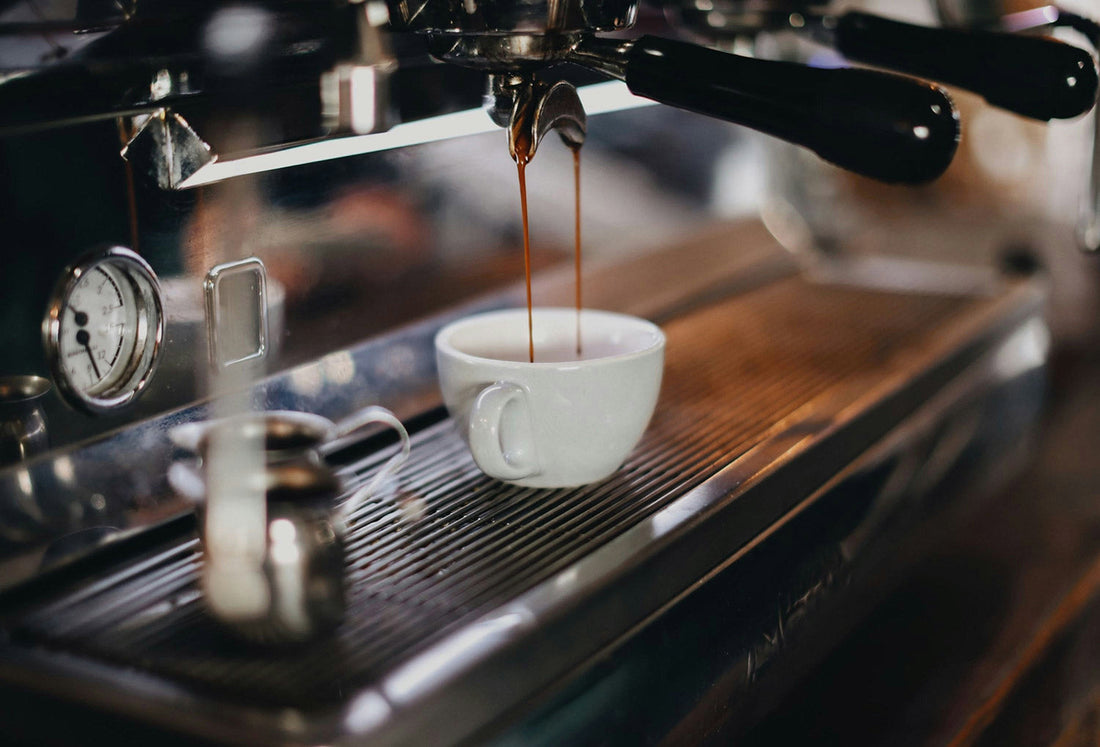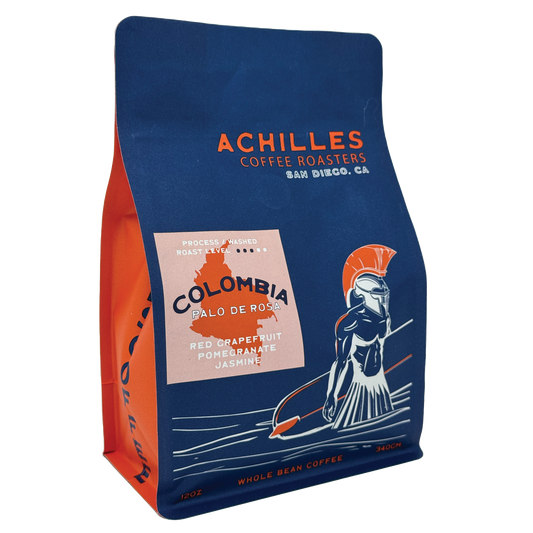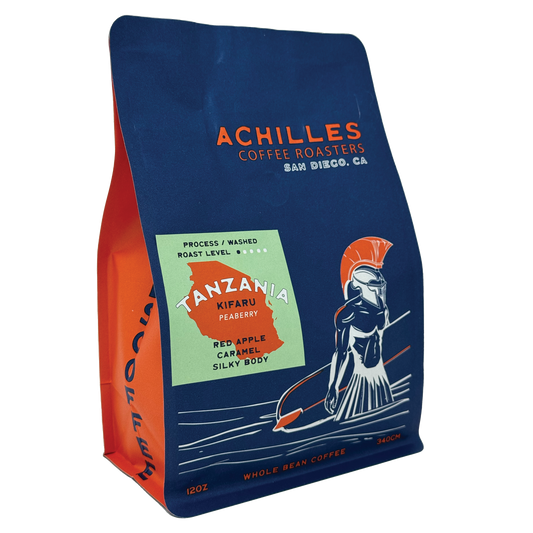If you’re passionate about coffee and want to recreate the café experience at home, setting up a home espresso station is a rewarding journey. Whether you're a budding barista or simply a coffee lover eager to master the art of espresso, this guide will help you choose the right manual espresso machine, understand essential accessories, and calibrate your setup for café-quality shots.
Let’s dive in!
Why Choose a Manual Espresso Machine?
When setting up your home espresso bar, you’ll come across three main types of machines: manual, semi-automatic, and fully automatic. So, why choose manual?
-
Complete Control: A manual espresso machine lets you control every variable—pressure, flow rate, and extraction time—giving you the ability to fine-tune each shot.
-
Better Understanding of Espresso: You’ll gain deeper knowledge of espresso mechanics—great for those who love the craft.
-
Longevity + Build Quality: Manual machines are often built with durable materials like stainless steel and brass, designed to last decades with proper care.
Choosing a manual espresso machine means embracing the learning curve, but the reward is in the rich, complex flavors you can unlock.
How to Choose the Right Manual Espresso Machine
Not all manual machines are created equal. Consider these factors:
Budget: Finding the Right Machine for Your Price Point
One of the most important factors when shopping for a manual espresso machine is your budget. Prices can vary dramatically depending on build quality, materials, precision engineering, and brand reputation. Understanding what to expect at different price levels can help you make a smarter, more satisfying investment.
Entry-Level Manual Espresso Machines ($150–$300)
If you’re just starting your espresso journey or want an affordable way to explore manual brewing, there are excellent options at the lower end of the price spectrum. Machines like the Flair Espresso Maker, Flair Pro 2, and ROK Espresso GC offer impressive shot quality for the price.
What you get:
-
Minimalist design focused purely on extraction
-
Portable, lightweight machines (great for travel)
-
Manual levers with no built-in boiler—requires separate water heating
-
Fewer parts, so maintenance is simple
What you compromise on:
-
More hands-on effort to control water temperature and pressure
-
Limited steaming capabilities (most entry-level manual machines don’t include steam wands)
Mid-Range Manual Espresso Machines ($300–$800)
In this range, you start seeing machines that offer enhanced durability, better thermal stability, and features that improve consistency. Some models may incorporate small boilers or use higher-grade metals.
What you get:
-
Upgraded materials (more stainless steel or brass components)
-
Smoother lever action with more precise pressure control
-
Better shot consistency
-
Some machines may have optional accessories for steaming
Premium Manual Espresso Machines ($1,000 and up)
If you’re serious about espresso or want a machine that’s as much a functional tool as a piece of art, premium models like the La Pavoni Europiccola, La Pavoni Professional, or the Olympia Cremina are worth considering. These machines are built to last decades (with proper care) and deliver superb shot quality.
What you get:
-
All-metal construction with minimal plastic
-
Brass boilers, group heads, and heavy-duty components for thermal stability
-
Timeless design and craftsmanship
-
High resale value if you ever upgrade
-
Potential for steam wands and multi-functionality
What you pay for:
-
A significant upfront investment
-
More weight and counter space required
Tip: Invest in the Best Machine You Can Afford
Espresso is a highly sensitive brewing method where precision and build quality make a huge difference. A well-built machine will help you achieve better results with less frustration—and it’s likely to last longer, saving you money in the long run.
Pro insight: Don’t forget to budget for a quality grinder (equally important!) and accessories like a tamper, scale, and milk frothing pitcher. Even the best machine can’t deliver great espresso without the right supporting tools.
Build Quality + Materials
When investing in a manual espresso machine, build quality is one of the most important factors to consider. A well-built machine not only lasts longer but also helps produce more consistent and satisfying espresso shots. Let’s break down what to look for:
All-Metal Construction
Choose a machine that features a frame and key components made of stainless steel, brass, or aluminum. All-metal bodies are far more durable than plastic ones, resisting wear, dents, and warping over time. Metal machines also tend to feel more solid and stable on your countertop, which is important when applying pressure during manual extraction.
Brass Boilers or Groupheads
Brass is prized in espresso machines because of its excellent heat retention and thermal stability. A brass boiler or grouphead ensures that the temperature stays consistent from shot to shot, which is crucial for extracting espresso at the right temperature and getting balanced flavors. Machines with brass components typically recover heat faster between shots as well.
Minimal Plastic Parts
While some machines use plastic for knobs, handles, or trim, aim for models where critical components (like the grouphead, portafilter, and internal mechanisms) are metal. Plastic parts can degrade over time, especially when exposed to heat and moisture, leading to leaks, cracks, or failures. Fewer plastic parts generally mean better durability and reliability in the long run.
Sturdy Materials = Better Heat Retention
Solid metals like brass and stainless steel don’t just offer durability—they also play a functional role in brewing. Heavier, more robust materials retain heat longer, helping to maintain the stable temperatures needed for optimal extraction. This results in espresso that is more consistent in taste and crema from one shot to the next.
Pro tip: When shopping for a manual espresso machine, don’t just go by looks. Ask about the internal components and materials used—not all shiny machines are built to last!
Ease of Maintenance
Owning a manual espresso machine comes with the reward of crafting café-quality coffee at home—but it also comes with some upkeep. Regular maintenance ensures your machine stays in top shape, lasts for years, and consistently pulls delicious shots. When evaluating a machine, pay close attention to how easy it is to clean, descale, and service.
Removable Water Reservoirs
A removable water reservoir makes both daily use and cleaning significantly easier. You can refill it at the sink without having to maneuver your entire machine, and it’s much simpler to scrub or soak the reservoir when it needs a deep clean. This helps prevent mineral buildup and mold growth, both of which can affect the flavor of your coffee and the longevity of your machine.
Easy-Access Group Heads
Over time, coffee oils and grounds can clog up your group head, affecting extraction and flavor. Look for a machine design where the group head is easy to reach and disassemble for routine cleaning. Some manual machines are engineered so you can quickly remove the shower screen and gasket without special tools, saving time and frustration during maintenance.
Simple Gasket Replacements
The group head gasket forms a tight seal between your portafilter and the machine, and it wears down with use. A well-designed machine allows you to replace this inexpensive but essential part without calling a technician. Check that the gasket is a standard size and that replacement parts are easy to source. This small detail can make a big difference in keeping your machine functioning smoothly over the years.
Spare Parts Availability
Pro tip: Before committing to a purchase, research whether spare parts like gaskets, shower screens, seals, and filters are readily available for your chosen machine. Some lesser-known brands may offer budget-friendly prices upfront but make it difficult to find replacement parts down the road. Buying from brands with strong support networks or community followings ensures you can maintain your machine without headaches.
Why Maintenance-Friendly Design Matters
A machine that’s easy to clean and service means less downtime, better-tasting espresso, and lower long-term costs. Neglected machines not only produce poor shots, but they’re also more likely to break down prematurely.
Bonus tip: Set up a simple cleaning schedule—for example, wiping down your group head after every session, backflushing weekly (if your machine allows it), and descaling every 1–3 months depending on your water hardness.
Size + Aesthetics
Consider your counter space. Manual machines are often more compact, but some models have tall levers or wide bases. Also, think about style—manual machines often have beautiful, timeless designs that double as kitchen showpieces.
Essential Accessories for a Manual Espresso Setup
Your espresso machine is just the beginning. Here’s what else you’ll need:
Coffee Grinder
A high-quality burr grinder is critical. Espresso requires a fine, consistent grind. Popular choices include:
-
1Zpresso J-Max (manual grinder)
-
Eureka Mignon Specialita (electric grinder)
Without a good grinder, even the best machine won’t deliver.
Tamper
A properly fitted tamper ensures an even, compacted puck. Manual machines often come with cheap tampers—upgrade to a precision tamper that matches your portafilter diameter (e.g., 51mm or 58mm).
Scale
Dialing in your espresso requires precise measurements. Use a digital scale with:
-
0.1g accuracy
-
Waterproof design (espresso can get messy!)
Thermometer + Pressure Gauge
If your machine doesn’t include these, external tools can help monitor water temp and pressure during extraction.
Calibrating Your Manual Espresso Machine
Once you’ve got your gear, it’s time to dial in your machine.
Step 1: Water Quality
Espresso is 90% water. Bad water = bad espresso.
-
Use filtered water low in calcium and magnesium to avoid scaling.
-
Ideal hardness: 50-100 ppm
-
Avoid distilled water—it can damage boilers.
Step 2: Dose + Grind
Start with:
-
Dose: 16-18 grams for a double shot (adjust depending on your basket size)
-
Grind: Fine—like table salt or finer
Step 3: Extraction Time
Your goal: 25-30 seconds for a double shot, starting from the first drop.
-
If extraction is too fast (under 20s): grind finer or tamp harder.
-
If too slow (over 35s): grind coarser or tamp lighter.
Step 4: Lever Pressure
For manual machines, pressure comes from you. Aim for:
-
6-9 bars of pressure
-
A smooth, steady pull on the lever
Practice makes perfect—too fast, and you under-extract; too slow, and you over-extract.
Step 5: Temperature Control
Preheat your machine and portafilter—run hot water through it first. Ideally, aim for water around:
-
195°F to 205°F (90°C to 96°C)
Some manual machines benefit from temperature surfing—timing your shot after the boiler reaches a certain temp.
Common Issues + Troubleshooting
|
Problem |
Cause |
Solution |
|
Sour espresso |
Under-extraction |
Finer grind, longer extraction |
|
Bitter espresso |
Over-extraction |
Coarser grind, shorten extraction |
|
Channeling (uneven flow) |
Poor tamp or distribution |
Improve puck prep, use WDT tool |
|
Low crema |
Stale beans, low pressure |
Use fresh beans, check your technique |
Dialing It In: Practice Makes Perfect
Espresso Isn’t Just a Recipe — It’s a Craft
Pulling the perfect espresso shot is much more than following a set of instructions — it’s a craft that balances precision, patience, and sensory skill. When you’re setting up a new manual espresso machine or dialling in a grinder, expect a learning curve. It’s completely normal (and encouraged!) to pull 10 to 20 practice shots as you fine-tune your variables. Every adjustment teaches you something about how your equipment behaves and how tiny changes can dramatically affect flavor.
Think of these early shots not as wasted coffee, but as essential steps in mastering your gear and your technique. The goal is to build muscle memory and a deeper understanding of how to manipulate the variables that control your espresso’s taste and texture.
Keep Notes on Key Variables
Keeping detailed notes during your dial-in sessions is one of the best ways to speed up your learning and achieve consistency. Track these core parameters with each shot:
Dose (Coffee In)
Measure the exact amount of ground coffee you use for each shot, typically in grams. Even slight changes in dose can affect extraction and balance. Standard doses range from 14–18 grams for a double shot, but your machine and basket size may influence this.
Tip: Use a precision scale that measures to 0.1g for accuracy.
Grind Size
Espresso is highly sensitive to grind size. A grind that’s too coarse will cause under-extraction, resulting in sour, thin coffee. A grind that’s too fine can choke your machine, leading to bitter, over-extracted shots. Adjust in tiny increments and note the setting you used (especially if your grinder has numbered dials or stepped adjustments).
Tip: Make one adjustment at a time—change either dose or grind, not both at once, so you can clearly see its effect.
Time (Extraction Time)
Record how long it takes for your espresso to pull from the moment you start the extraction to the moment you stop it. Most traditional double shots aim for 25–30 seconds, but this can vary depending on your coffee and style preferences.
Tip: If your shot runs too fast or too slow, adjust your grind before your dose in most cases.
Taste (Sensory Notes)
Ultimately, taste is king. After each shot, write down what you experience: Is it too bitter, too sour, too flat, too harsh? Can you taste sweetness, balanced acidity, or complexity? Your palate will guide your adjustments more than any stopwatch or scale.
Tip: Taste every shot—even the “bad” ones. Developing your palate is just as important as learning to dial in.
Why Notes Matter
By keeping detailed records, you create a map that helps you:
-
Troubleshoot faster — you’ll spot patterns and know what adjustments to make.
-
Repeat success — when you land on the perfect shot, you’ll know exactly how to recreate it.
-
Refine over time — as you switch coffees, adjust for age of beans, or improve your technique.
Pro Tip: Consider keeping a small espresso journal or using an app designed for tracking espresso variables. This not only sharpens your skills but turns your coffee practice into an ongoing, rewarding journey.
Over time, you’ll develop an intuitive feel for what adjustments are needed.
Maintaining Your Manual Espresso Machine
A manual espresso machine is an investment in both craftsmanship and the art of coffee. To protect that investment and ensure every shot is as delicious as the last, regular maintenance is essential. A clean, well-maintained machine not only produces better-tasting espresso but also lasts longer and performs more reliably.
Let’s break down what proper maintenance looks like:
Daily Maintenance
After each use, spend a few minutes on quick cleaning tasks to prevent coffee residue and oils from building up:
-
Rinse the portafilter and basket thoroughly. Old coffee grounds left behind can impart bitter, stale flavors into future shots. A simple rinse under hot water goes a long way.
-
Wipe down the group head. Use a damp, clean cloth to wipe off coffee residue from the group head’s underside. If your machine allows, give the shower screen a quick flush of water to clear out remaining grounds.
-
Purge the steam wand (if applicable). If your manual machine includes a steam wand, always purge it before and after steaming to prevent milk residue from clogging it.
Weekly Maintenance
Once a week, set aside a little more time for a deeper clean:
-
Remove and soak the portafilter basket and shower screen. Soak them in warm water with a bit of espresso machine cleaner or mild detergent to break down stubborn coffee oils.
-
Scrub the group head. Use a group head brush or an old toothbrush to clean around and inside the group head where grounds can accumulate.
-
Inspect gaskets and seals. Check for wear or cracks in the group head gasket; replacing it when needed keeps your machine’s seal tight and prevents leaks.
Monthly Maintenance
Every month (or more often if you have hard water):
-
Descale the machine. Limescale builds up in boilers, group heads, and pipes, affecting water flow, temperature stability, and overall machine health. Use a descaling solution appropriate for your machine’s materials (avoid vinegar, as it can damage brass and seals).
-
Check for signs of wear. Inspect levers, handles, and other moving parts to ensure they’re functioning smoothly. Lubricate if recommended by your manufacturer.
Pro tip: The frequency of descaling depends on your local water hardness. If you’re unsure, consider using filtered or softened water to minimize scale buildup.
Why Maintenance Matters
Regular maintenance ensures:
-
Consistent espresso quality — no off-flavors or uneven extractions
-
Reliable performance — fewer breakdowns and frustrations
-
Longer machine lifespan — protect your investment for years to come
Think of your espresso machine like a musical instrument: the better you care for it, the more beautifully it performs.
Final Thoughts: Enjoy the Journey
A manual espresso setup at home is about more than just the coffee—it’s about the ritual. From weighing your dose to the satisfying pull of the lever, you’ll find joy in every step of the process. And when you finally dial in that perfect shot? Pure magic.
FAQs About Home Manual Espresso Machines
What’s the difference between a manual and semi-automatic espresso machine?
Manual machines rely entirely on you to create pressure, while semi-automatic machines use an electric pump for consistent pressure.
How long does it take to learn to use a manual espresso machine?
Most home baristas need a few weeks of practice to become comfortable pulling great shots consistently.
Is a manual espresso machine worth it?
If you enjoy hands-on brewing and want ultimate control over your espresso, a manual machine is absolutely worth it.
Conclusion
Choosing and calibrating a manual espresso machine for your home is a journey of discovery and delight. Unlike automatic machines, manual espresso setups give you complete control over every variable—from grind size and tamping pressure to water temperature and shot timing. This hands-on approach may come with a learning curve, but it also delivers unmatched satisfaction once you dial in your technique.
The first step is selecting the right machine for your needs and skill level. Entry-level lever machines offer simplicity and tactile feedback, while high-end models provide more temperature stability and pressure control. Pair your machine with a quality burr grinder, and you’ll be well on your way to unlocking the full flavor potential of your beans.
Calibrating your espresso setup involves experimentation and attention to detail. You’ll learn to adjust your grind, dose, and yield based on your coffee’s roast level and origin. With a bit of patience, trial and error becomes a fun part of the process—not a chore.
With the right tools, fresh beans, and a little practice, you’ll be pulling café-quality espresso shots right from your kitchen—and discovering just how rewarding home espresso can be.








